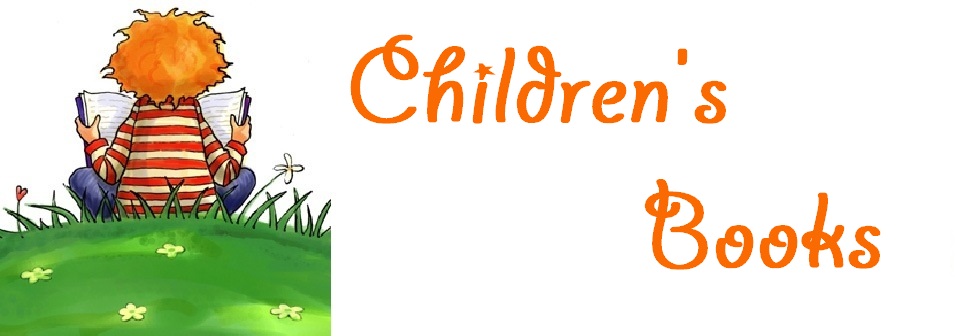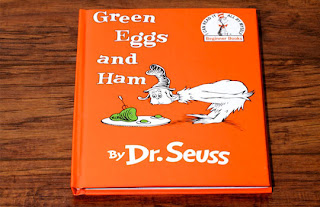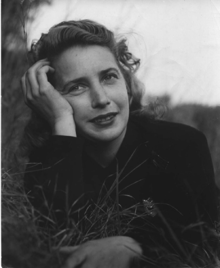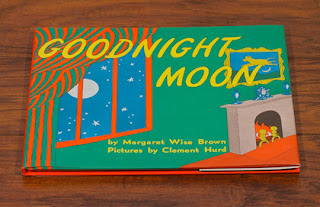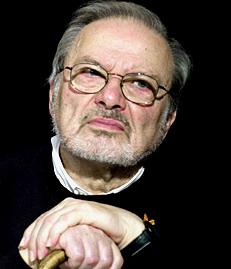Sunday 28 October 2012
Green Eggs and Ham
These unforgettable words that stay with you forever. “I am Sam, Sam I am” begins with this amazing tale. Only Only Dr. Seuss could compose such silly, yet elegant stories, and all with a simple thought. Kids and adults alike have loved and cherished the stories that have become a part of tradition. This is just one such story. With rhythm and rhyme that is easy to follow and a story that makes you want to say, “Just try the green eggs and ham, you may like them Sam I am!”, this is one story that may take you on adventures to read more tales by Dr. Seuss. Reading this book with a child may offer you more than you bargained for, especially when you try to read it faster and faster. An “I Can Read” book, this story for young children only contains fifty words, all of which are easily read and understood.
Saturday 27 October 2012
Author: Margaret Wise Brown
The middle child of three whose parents (one of whom was the son of B. Gratz Brown) suffered from an unhappy marriage, Brown was born in the Greenpoint neighborhood of Brooklyn, New York,[1] and in 1923 attended boarding school in Woodstock, Connecticut, while her parents were living in Canterbury. She began attending Dana Hall School in Wellesley, Massachusetts, in 1926, where she did well in athletics. After graduation in 1928, Brown went on to Hollins College in Roanoke, Virginia.
Following her graduation with a B.A. in English[1] from Hollins in 1932, Brown worked as a teacher, and also studied art. It was while working at the Bank Street Experimental School in New York City that she started writing books for children. Her first book was When the Wind Blew, published in 1937 by Harper & Brothers.
Brown then went on to develop her Here and Now stories, and later the Noisy Book series while employed as an editor at William R. Scott. Her popular book The Little Fur Family, illustrated by Garth Williams, was published in 1946. Also in 1946, Brown wrote The Little Island and "Little Lost Lamb", both under the pseudonym Golden MacDonald and illustrated by Leonard Weisgard. The former won a Caldecott Honor recognition in 1946 and the latter the Caldecott Medal in 1947. In the early 1950s, she wrote several books for the Little Golden Books series including The Color Kittens, Mister Dog and Scuppers The Sailor Dog.
Thursday 25 October 2012
Goodnight Moon
Bedtime stories are a favorite among children and parents alike, and this is one of the most beloved bedtime stories of all time. Written by Margaret Wise Brown and illustrated by Clement Hurd, saying goodnight has never been more fun than with this tale of comfort, loving goodnights, and a room full of entertaining objects to say ‘goodnight’ to. Written in rhyming verse that makes it easy for even the youngest children to memorize, they will soon be able to ‘read’ it along with you. This is one story that will soon become a family favorite. Parents and children have been sharing this story for more than fifty years, and it has become one of the best loved picture books of all time. “Goodnight” time has never been more quiet and loving than when you share this timeless tale of saying “goodnight” with your children and grandchildren.
Saturday 20 October 2012
Author: Sheldon Silverstein
Sheldon Allan "Shel" Silverstein (September 25, 1930 – May 8/9, 1999), was an American poet, singer-songwriter, musician, composer, cartoonist, screenwriter and author of children's books. He styled himself as Uncle Shelby in his children's books. Translated into more than 30 languages, his books have sold over 20 million copies.
He graduated from Theodore Roosevelt High School. He began studying art at the University of Illinois but was forced to leave due to bad grades. Then he attended the Art Institute of Chicago but left after one year. He was first published in the Roosevelt Torch (a student newspaper at Roosevelt University), where he studied English after leaving the Art Institute. In 1953 he was drafted by the US Army and served in Japan and Korea. In the military, his cartoons were published in Pacific Stars and Stripes, where he had originally been assigned to do layouts and paste-up. His first book, Take Ten, a compilation of his military Take Ten cartoon series was published by Pacific Stars and Stripes in 1955. He later said his time in college was a waste and would have been better spent traveling around the world meeting people
Thursday 18 October 2012
The Giving Tree
It has been said that the true example of love is being willing to give of one’s self for the benefit of another. Shel Silverstein tells the story of love between a boy and a tree that is an example of this sacrificial love. From the time the boy is young and needs shade as he plays to growing up and being allowed to climb in her branches to the time when he is older and wants something that may mean the end of the tree, the tree keeps on giving to him- out of love. Though there are many ways to interpret this story, the true message of love shines through. Even when the boy is an old man and long after the tree has been cut down, what is left of the tree is still giving. The old man, once the little boy who played under the tree, now uses the stump of the tree to rest on.
Thursday 4 October 2012
Author: Maurice Bernard Sendak
Maurice Bernard Sendak (June 10, 1928 – May 8, 2012) was an American writer and illustratir of children's literature. He was best known for his book Where the Wild Things Are, first published in 1963.
Sendak was an early member of the National Board of Advisors of the Children's Television Workshop during the development stages of the Sesame Street television series. He also adapted his book Bumble Ardy into an animated sequence for the series, with Jim Henson as the voice of Bumble Ardy. He wrote and designed three other animated stories for the series: "Seven Monsters" (which never aired), "Up & Down", and "Broom Adventures".
Tuesday 2 October 2012
Where the Wild Things Are
Author Maurice Sendak offers a tale of suspense, action, and fun, with this story about a young boy named Max who wears a wolf suit to bed. Max has been naughty and is sent to bed without any dinner. The real adventure begins with the forest growing and creatures appearing as wild and free. Being wild with the wild things can be tiring, as Max discovers on his adventure. As things begin to happen in his room, creatures appear that are a cross between scary and funny. Winner of the Caldecott Medal and listed in the ‘Best Illustrated Children’s Books” for many years, this is a winner worth a look. Illustrations that will grab your eye and a written tale that will draw you and your children back again and again are what this story has to offer. Adventure, artwork, and fun are all wrapped up in one small package here.
Subscribe to:
Posts (Atom)
